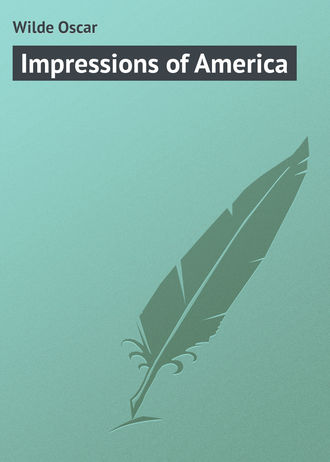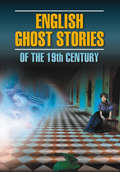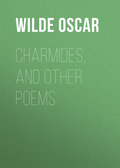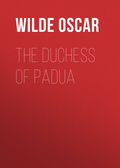
Оскар Уайльд
Impressions of America
IMPRESSIONS
I
LE JARDIN
The lily’s withered chalice falls
Around its rod of dusty gold,
And from the beech trees on the wold
The last wood-pigeon coos and calls.
The gaudy leonine sunflower
Hangs black and barren on its stalk,
And down the windy garden walk
The dead leaves scatter, – hour by hour.
Pale privet-petals white as milk
Are blown into a snowy mass;
The roses lie upon the grass,
Like little shreds of crimson silk.
II
LA MER
A white mist drifts across the shrouds,
A wild moon in this wintry sky
Gleams like an angry lion’s eye
Out of a mane of tawny clouds.
The muffled steersman at the wheel
Is but a shadow in the gloom; —
And in the throbbing engine room
Leap the long rods of polished steel.
The shattered storm has left its trace
Upon this huge and heaving dome,
For the thin threads of yellow foam
Float on the waves like ravelled lace.
Oscar Wilde.
PREFACE
Oscar Wilde visited America in the year 1882. Interest in the Æsthetic School, of which he was already the acknowledged master, had sometime previously spread to the United States, and it is said that the production of the Gilbert and Sullivan opera, “Patience,”1 in which he and his disciples were held up to ridicule, determined him to pay a visit to the States to give some lectures explaining what he meant by Æstheticism, hoping thereby to interest, and possibly to instruct and elevate our transatlantic cousins.
He set sail on board the “Arizona” on Saturday, December 24th, 1881, arriving in New York early in the following year. On landing he was bombarded by journalists eager to interview the distinguished stranger. “Punch,” in its issue of January 14th, in a happy vein, parodied these interviewers, the most amusing passage in which referred to “His Glorious Past,” wherein Wilde was made to say, “Precisely – I took the Newdigate. Oh! no doubt, every year some man gets the Newdigate; but not every year does Newdigate get an Oscar.”
At Omaha, where, under the auspices of the Social Art Club, Wilde delivered a lecture on “Decorative Art,” he described his impressions of many American houses as being “illy designed, decorated shabbily, and in bad taste, filled with furniture that was not honestly made, and was out of character.” This statement gave rise to the following verses: —
What a shame and what a pity,
In the streets of
London City
Mr. Wilde is seen no more.
Far from
Piccadilly banished,
He to
Omaha has vanished.
Horrid place, which swells ignore.
On his back a coat he beareth,
Such as
Sir John
Bennet weareth,
Made of velvet – strange array!
Legs Apollo might have sighed for,
Or great
Hercules have died for,
His knee breeches now display.
Waving sunflower and lily,
He calls all the houses “illy
Decorated and designed.”
For of taste they’ve not a tittle;
They may chew and they may whittle;
But they’re all born colour-blind!
His lectures dealt almost exclusively with the subjects of Art and Dress Reform. In the course of one lecture he remarked that the most impressive room he had yet entered in America was the one in Camden Town where he met Walt Whitman. It contained plenty of fresh air and sunlight. On the table was a simple cruse of water. This led to a parody, in the style of Whitman, describing an imaginary interview between the two poets, which appeared in “The Century” a few months later. Wilde is called Narcissus and Whitman Paumanokides.
Paumanokides: —
Who may this be?
This young man clad unusually with loose locks, languorous, glidingly toward me advancing,
Toward the ceiling of my chamber his orbic and expressive eyeballs uprolling,
and so on, to which Narcissus replies,
O clarion, from whose brazen throat,
Strange sounds across the seas are blown,
Where England, girt as with a moat,
A strong sea-lion sits alone!
Of the lectures which he delivered in America only one has been preserved, namely that on the English Renaissance. This was his first lecture, and it was delivered in New York on January 9th, 1882. According to a contemporary account in the “New York Herald” a distinguished and crowded audience assembled in Chickering Hall that evening to listen to one who “was well worth seeing, his short breeches and silk stockings showing to even better advantage upon the stage than in the gilded drawing-rooms, where the young Apostle has heretofore been seen in New York.”2
On leaving the States in the “fall” of the year Wilde proceeded to Canada and thence to Nova Scotia, arriving in Halifax in the second week of October. Of his visit there we have no record except an amusing interview described in a local paper a few days later. He was dressed in a velvet jacket with an ordinary linen collar and neck tie and he wore trousers. “Mr. Wilde,” the interviewer states, “was communicative and genial; he said he found Canada pleasant, but in answer to a question as to whether European or American women were the more beautiful, he dexterously evaded his querist.”







